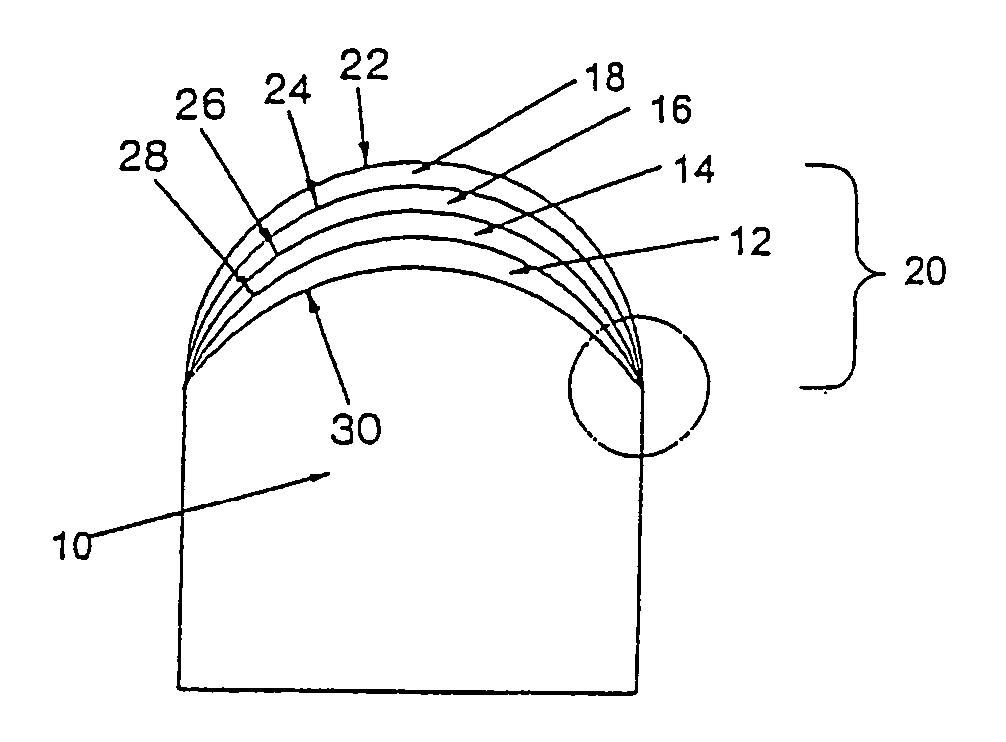Composite abrasive compact
a technology of abrasives and compacts, applied in the direction of grinding machines, other manufacturing equipment/tools, gear teeth, etc., can solve the problems of abrasive compacts that are predisposed to premature failure by spalling, abrasive compacts that are stressed, etc., and achieve the effect of minimising mechanical/elastic stresses
- Summary
- Abstract
- Description
- Claims
- Application Information
AI Technical Summary
Benefits of technology
Problems solved by technology
Method used
Image
Examples
Embodiment Construction
[0026] The ultra-hard abrasive particles may be diamond or cubic boron nitride, but are preferably diamond particles.
[0027] The substrate is preferably a cemented carbide substrate such as cemented tungsten carbide, cemented tantalum carbide, cemented titanium carbide, cemented molybdenum carbide or a mixture thereof. The cemented carbide substrate may contain particles of a grain inhibiting agent such titanium carbide, tantalum carbide, vanadium carbide or a mixture thereof. The binder metal for such cemented carbide may be any known in the art such as nickel, cobalt, iron or an alloy containing one or more of these metals. Typically the binder will be present in an amount of 6 to 20% by mass. Some of the binder metal may infiltrate the abrasive compact during the HPHT treatment. A shim or layer of binder may be used for this purpose.
[0028] To improve the service life of a composite abrasive compact, it is necessary to reduce the residual stresses induced in the compact as a resu...
PUM
| Property | Measurement | Unit |
|---|---|---|
| volume percent | aaaaa | aaaaa |
| volume percent | aaaaa | aaaaa |
| volume percent | aaaaa | aaaaa |
Abstract
Description
Claims
Application Information
 Login to View More
Login to View More - R&D
- Intellectual Property
- Life Sciences
- Materials
- Tech Scout
- Unparalleled Data Quality
- Higher Quality Content
- 60% Fewer Hallucinations
Browse by: Latest US Patents, China's latest patents, Technical Efficacy Thesaurus, Application Domain, Technology Topic, Popular Technical Reports.
© 2025 PatSnap. All rights reserved.Legal|Privacy policy|Modern Slavery Act Transparency Statement|Sitemap|About US| Contact US: help@patsnap.com


